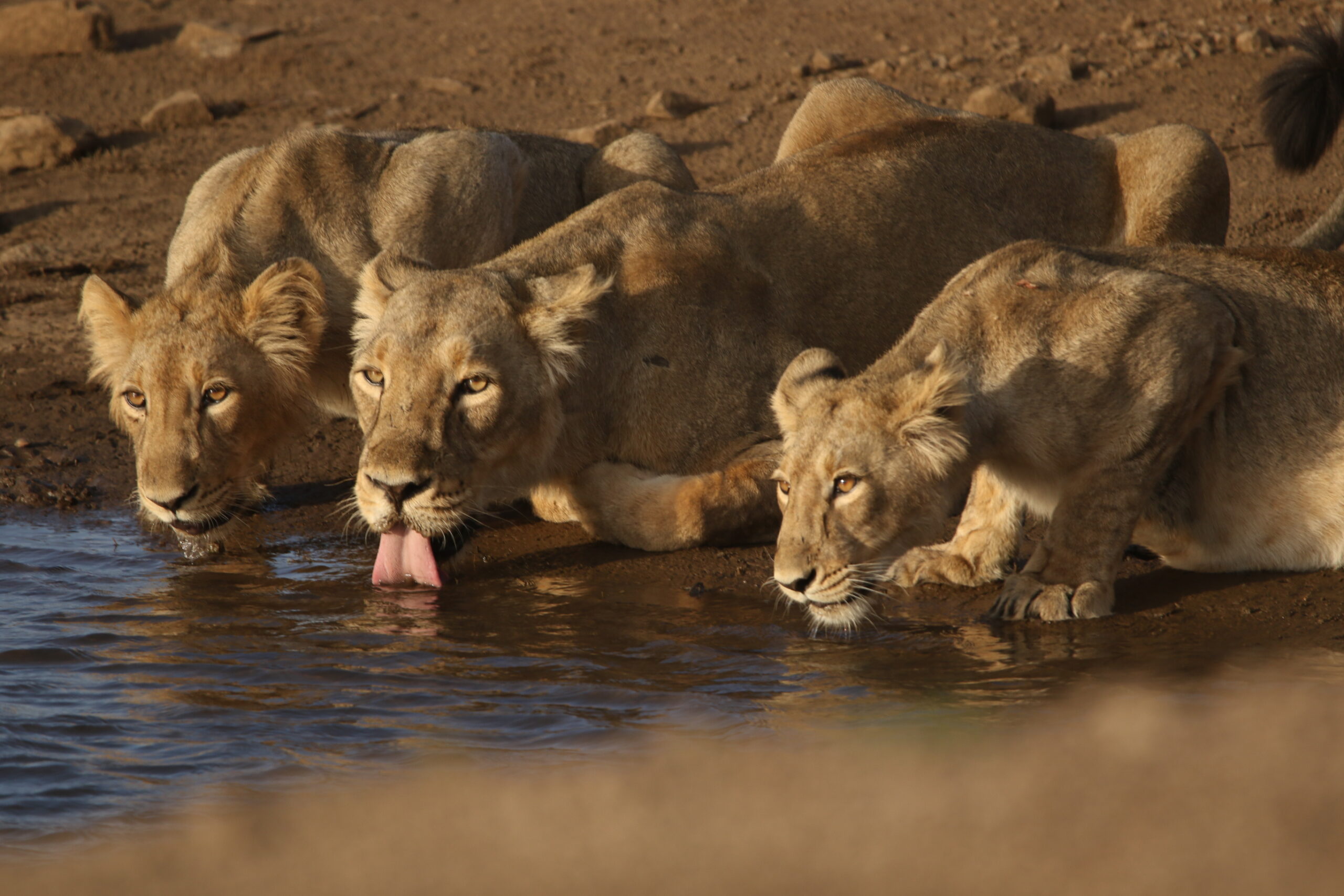
The Open Secret of “Organized” Lion Sightings at Sasan Gir: My Experience
I want to share my personal experience regarding the issue of “organized” lion sightings in Sasan Gir, the home of Asiatic lions. This matter demands well-informed action. Over the years, incidents have come to light, revealing the existence of organized lion sighting “settings” in the media, particularly involving celebrities. However, another fact behind these “settings” seems to have been exploited by amateur wildlife photographers seeking the coveted ‘head-on’ shot of these majestic creatures.
“Paying Extra” for Lion Sightings: Exploiting the Nexus
During my safaris in Sasan Gir, I encountered the practice of paying extra for lion sightings. Local guides promised a guaranteed lion sighting if I spent more, which would be used to compensate trackers who knew lion movements. While I respect the efforts of these dedicated individuals, some within this network have formed an unhealthy nexus. They share the lions’ exact locations with guides and tourists, giving them a better chance of witnessing the royal beasts up close.
I chose not to participate in this “setting” and refused to pay extra for lion sightings. For me, ethical wildlife encounters involve patience, intuition, and minimal human interference. Unfortunately, paying “extra” for lion sightings has been happening in Sasan Gir for some time.
One incident shared with me by a wildlife enthusiast highlighted the issue further. They paid extra to the guide to secure great lion sightings. As promised, they located a male lion sitting behind bushes. But what troubled them was that the guide instructed the tracker to nudge the lion from its resting place. To their astonishment, they tapped a stick, and the lion reluctantly got up, giving them a full view of the magnificent beast.
The Forest Department and its Commendable Efforts
Disturbing a wild animal’s comfort zone differs from paying extra for knowledge about its location. While the Asiatic lions in Gujarat are habituated to living among people and are generally non-man-eaters, such practices are far from ideal. The Forest Department has limited power to address these matters effectively.
Acknowledging the Forest Department’s incredible efforts in significantly increasing the Asiatic lions’ population is essential. However, controlling these “illegal” practices requires superhuman abilities to curb human greed. Based on my experience, I can attest that the Forest Department has taken active measures to respond to such reports. When I brought the nexus to their attention, they promptly took action against the implicated guide, suspending him from his duties.
Supporting Reports & Articles: Shedding Light on the Controversy
To delve further into the issue, additional reports and articles shed light on the controversy surrounding organized lion sightings in Sasan Gir. According to reports from reputable sources such as The Times of India, The Indian Express, Down To Earth, Gir National Park Blog, and Times Now News, the existence of illegal lion shows and the demand for government action have been highlighted, offering further support to the concerns raised.
Illegal safari earns lion’s share of tourists at Gir – THE TIMES OF INDIA

74 people caught for holding illegal lion shows in Gir forest in last 2 years – THE INDIAN EXPRESS

Baiting Lions In Wildlife Sanctuary Is Illegal And Unethical – THE GIR LION BLOG


Video of illegal Lion Show Emerges From Gir Forest – TIMES NOW

The Role of Tourists, Enthusiasts and Photographers in Making a Difference
While efforts have been made to address illicit activities and protect Asiatic lions, there is still work to be done. Education, awareness, and stricter enforcement are essential in curbing these unethical practices and ensuring the well-being of wildlife in Sasan Gir. According to me, the most critical role in addressing these issues lies with the tourists, wildlife enthusiasts, photographers, and ordinary individuals who visit places like Sasan Gir.
As a way to support the hard work and dedication of the guides, drivers, and trackers who earn meagre wages, ethical tipping is encouraged. However, it is crucial that tipping is done in a manner that does not result in disturbing the wildlife.

To create a positive change, it is essential for people to educate themselves about wildlife, forests, and nature. Developing a deeper understanding and respect for these ecosystems will help us make informed decisions and act responsibly.
Sustainable Tourism Practice at Sasan Gir: An Example for All National Parks in India
While the controversy of “organized” lion settings is a concern to ponder about Sasan Gir, one remarkable aspect truly captivated me, setting it apart from any other national park in India I have visited. Sasan Gir National Park has implemented a commendable policy prohibiting tourists from carrying personal food items or plastic bottles during safaris. Instead, they provide steel water bottles, priced at a mere Rs 10 per liter, which visitors can use to quench their thirst while exploring the park. I am deeply impressed by this forward-thinking initiative, as it not only discourages the presence of plastic within the protected forest area but also ensures that tourists have a sustainable and affordable option to fulfill their hydration needs.
As I reflect on the significance of this initiative, I am reminded of the importance of personal responsibility when visiting national parks. Every time I embark on a safari adventure, I make it a point to carry my steel bottle or request one from my tour agents. During the hours of exploration in search of the elusive cats, I am reminded of the immense value of preserving our natural heritage.

I sincerely hope other national parks in India take inspiration from Sasan Gir and embrace similar practices that discourage the presence of plastic and foster a culture of sustainability. By collectively working towards a plastic-free future within our national parks, we can ensure that these sanctuaries remain havens of natural beauty, untarnished by human-generated waste.



